There is a legend that this plant brings wealth to the house. Caring for zamioculcas at home is very simple, therefore it is not surprising that this bush has become loved by flower growers for its unpretentiousness and juicy green, beautiful foliage.
Material Content:
Species and varieties
This plant is native to tropical Africa. It grows on mountain plateaus where there is little soil. Its mutated tuber stem is underground. And long shoots, similar to branches with oblong small leaves, are actually large leaves.

Zamioculcas is a monotypic genus of a plant that is represented by only one species. It belongs to the Aroid family.
Synonyms are several names:
- zamioculcas lanceolate;
- Caladium is amyloid;
- Zamioculcas of Lodges.
In 2007, the first variety of Zamioculcas, called miniature, was presented at an international flower exhibition. Its bush has a more compact appearance and small leaves. The height of the miniature variety does not exceed 60 cm.
Zamioculcas: cultivation features
The indoor flower Zamioculcas is a succulent, which is difficult to guess by its appearance.

But in the earth he forms a tuber that accumulates a supply of water and nutrients, so he really does not like excess moisture.
- Zamioculcas grows slowly, in an adult state it usually reaches 1 meter.
- The plant is transplanted as it grows into a large container, replacing the old soil with fresh ground.
- Zamioculcas leaves strongly attract dust, therefore, they shower him once a month. During this procedure, soil is covered with polyethylene so that excess moisture does not reach the roots to the roots.
Home Care
The plant is very unpretentious. He likes warmth, bright light and very moderate watering. Dampness does not tolerate, therefore, it is watered only after the top layer of the soil has dried.
There are nuances of growing, without knowing which, the plant can easily be destroyed. Zamioculcas is better to underfill than to overfill - it grows in nature on African mountain plateaus, where there is no moist soil.
Temperature features, lighting, humidity
The air temperature in the room where Zamioculcas stands in winter should be at least 12 ° C.
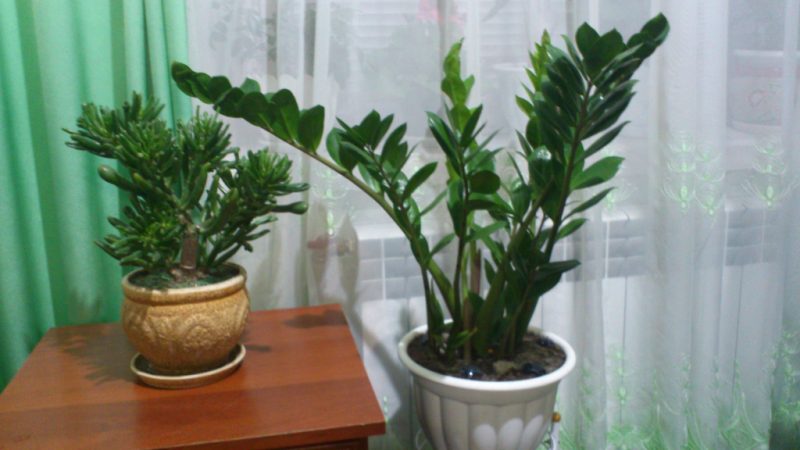
The flower does not like high humidity, the roots can rot from excessive watering. Beneficial effect on the appearance and development of the plant by spraying water on a leaf.
Places with diffused light are suitable as the best places to grow. In summer, the flower prefers outdoor seating - on the balcony in the garden. In winter, the plant is placed closer to the window, because it will not be enough light.
With insufficient lighting, the leaves of Zamioculcus wilt, the aesthetic appearance is lost.
Soil requirements
To the soil, the flower is undemanding. It should be light enough to pass water well. You can buy a ready-made earth mixture for succulents, which is sold in a store.
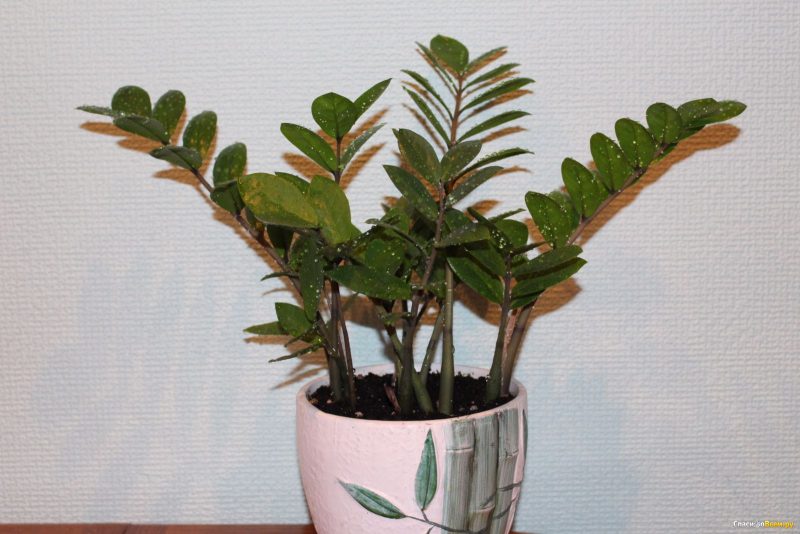
If you take fertile soil from the garden mixed with sand, it must first be decontaminated in the oven.
Read also:Zamioculcas celibacy flower
Watering and feeding
In winter, watering is reduced to a minimum, it will be enough once or twice a month. The soil should dry well before the next watering.
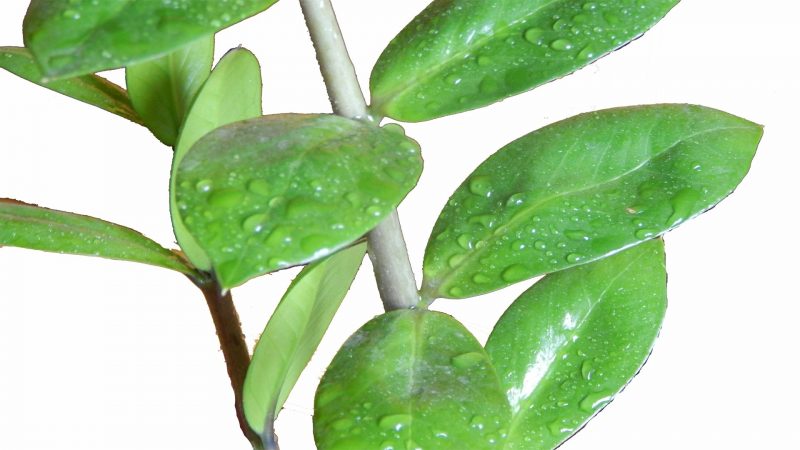
- Zamioculcas can not be fertilized after planting in fertile soil.
- For 2 years of cultivation, it is advisable to fertilize 2 or 4 times a month with fertilizers for cacti or decorative foliage plants.
- In winter, you do not need to feed.
- Foliar top dressing, which is carried out in the summer once every two weeks, is useful to the plant. Fertilizer is added to water for spraying leaves, breeding 10 times weaker than for irrigation.
In summer, Zamioculcas is watered once every 10 days, when the soil dries completely, to the very bottom. A plant can stand without watering for more than a month, but if it is too dry, it discards the leaves.
Cropping and shaping the crown
The plant does not need to trim and form the crown. In the absence of moisture, the leaves die off, but the tuber remains viable and can give new shoots.
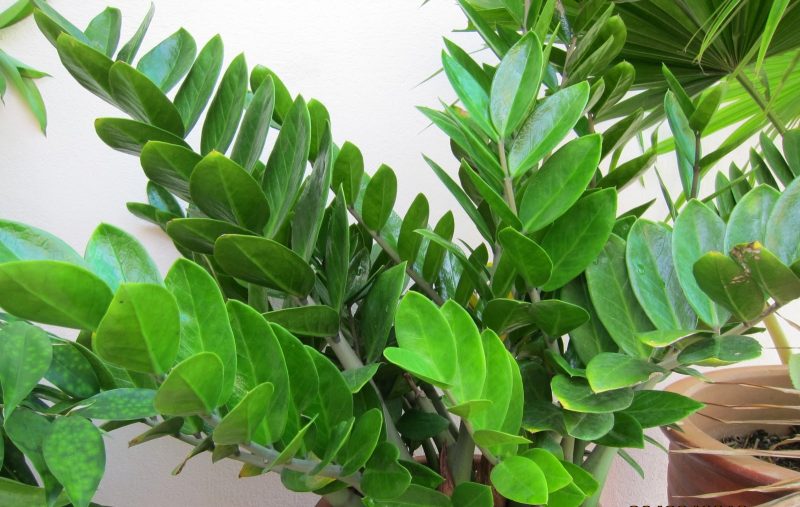
When working with the plant, care must be taken, because all its parts contain poisonous juice, which can cause allergies and redness on the skin.
Therefore, if there are children or pets in the house, it is better to put the flower in a place inaccessible to them.
Zamioculcus transplant
Zamioculcas is transplanted when its tubers fill the entire volume of the flower pot. This occurs approximately once every two years.
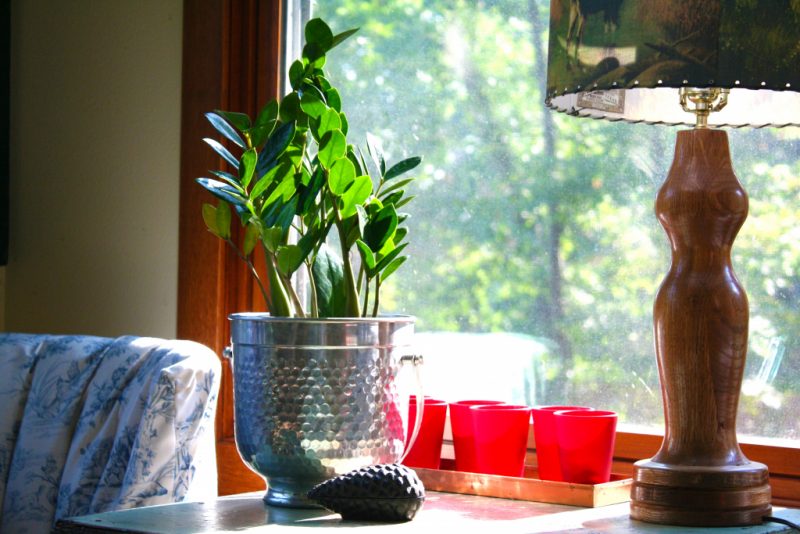
- For transplantation, a container is taken that is slightly larger than the previous one, expanded clay is placed at the bottom.
- There must be a hole in the bottom of the flower pot to drain the water.
- A good drainage layer, up to a quarter of the volume of the landing capacity, will create favorable conditions for the growth and development of the plant.
- For planting, you need soil that allows water and air to pass through well. It can be prepared independently from universal soil and vermiculite, perlite or sand. Suitable for zamiokulkasu succulent soil.
After planting in a new container, the plant is not watered for 3–7 days. The tuber collects a lot of moisture in itself, so it will suffer its lack much more easily than excess.
How does a dollar tree bloom?
Flowers of a dollar tree are hardly noticeable and do not differ in special beauty. The plant blooms at home very rarely, like most succulents.

A flower arrow is shown from the base of the leaf, which opens, forming a creamy cob with a greenish veil. The peduncle is short and thick; among the leaves, the flower is hardly noticeable.
A well-formed adult Zamioculcas can bloom, which regularly receives top dressings and stands in a well-lit place.
Propagation of a houseplant
Adult zamioculcas is quite expensive. But you can grow it yourself without spending a lot of money. Part of the leaf is suitable for propagation. It is desirable that it be well-formed, last year, containing a sufficient amount of nutrients.
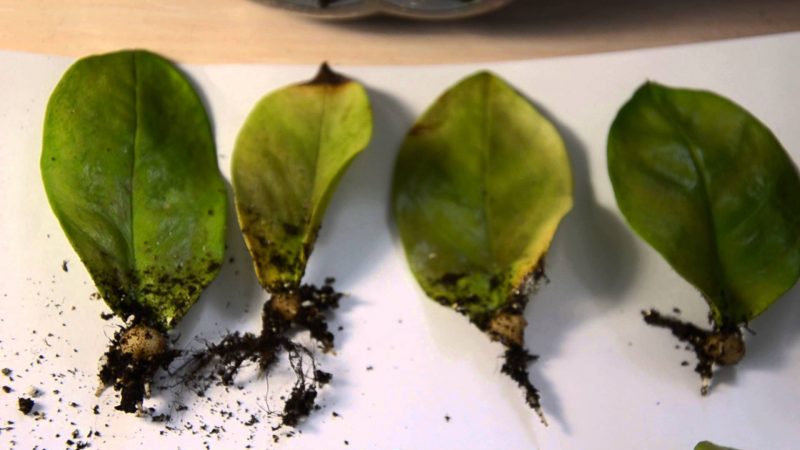
- Having plucked off the leaf, they allow it to dry in the air for about a day to form a protective crust. If you stick it into the ground right away, it can rot.
- Before planting, the lower part of the sheet is dipped in crushed activated carbon or root formation stimulator.
- After that they stick into the ground, propping up something so that the sheet is in an upright position, and not lying on the ground.
- After planting a leaf of Zamioculcas, it does not need to be watered. After three days, it is enough to spray it from the spray gun - the plant does not need more moisture. Repeat spraying once a week, a greenhouse to create high humidity can not do.
Pests and diseases of Zamioculcas
Various pests flower rarely affected. Its thick leathery leaves attract little insects. But sometimes on the leaves a spider mite, aphid or scabies settles. For treatment against pests, the drug Fitoverm or other insecticides are used.
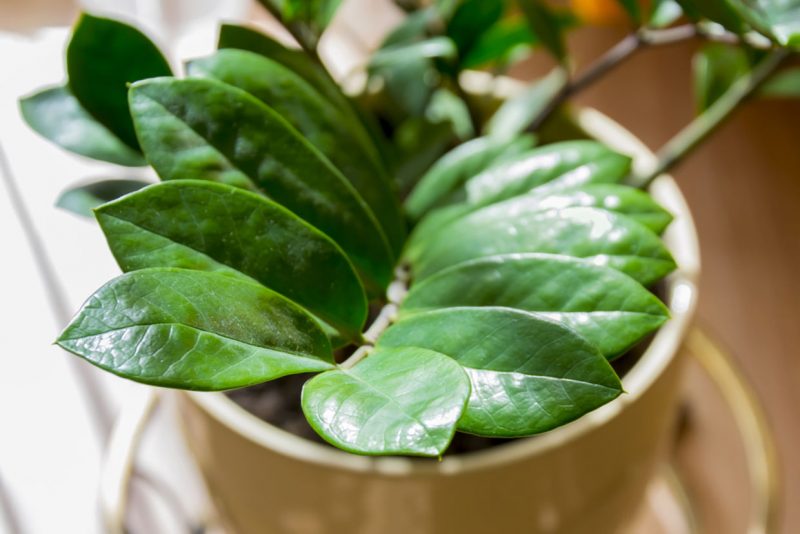
A common problem - yellowing of leaves, can be caused by various reasons. If old leaves turn yellow and die, and new ones grow safely, this is a natural process and you do not need to worry. When the leaf is completely dry, it is carefully cut.
If young leaves begin to turn yellow, and the plant stops growing, there is reason for alarm.
This phenomenon can be caused by errors in care and adverse growing conditions:
- drafts;
- a sharp change in air temperature;
- poor watering;
- insect pests;
- rotting of the roots.
Most often, the plant suffers from excessive watering, leading to a disease of the root system.
This is easy to determine by removing the flower from the pot. Inspection of the tubers will show that they have become soft, have lost elasticity. An unpleasant odor will come from the roots. The problem can be fixed if it is not too running.
- To save the flower, all rotten roots are cut with sharp scissors.
- The roots are washed with warm water.
- Slices sprinkled with charcoal or treated with a solution of potassium permanganate.
- During the day, the plant is dried, and then planted in a new pot.
- The first week is left without watering. Then they are watered once every two weeks, adding a growth stimulator to the water and, conducting foliar top dressing on the leaves, so that the plant better takes root.
For the prevention of decay, it is possible to pour zamioculcas with a systemic fungicide.
Zamioculcas with glossy succulent leaves, looks very attractive in the office and apartment. It is convenient to grow florists who forget to water the indoor flowers on time. For proper care, the dollar tree will respond with a quick set of green mass and, perhaps, even please the owner with unusual flowering.












